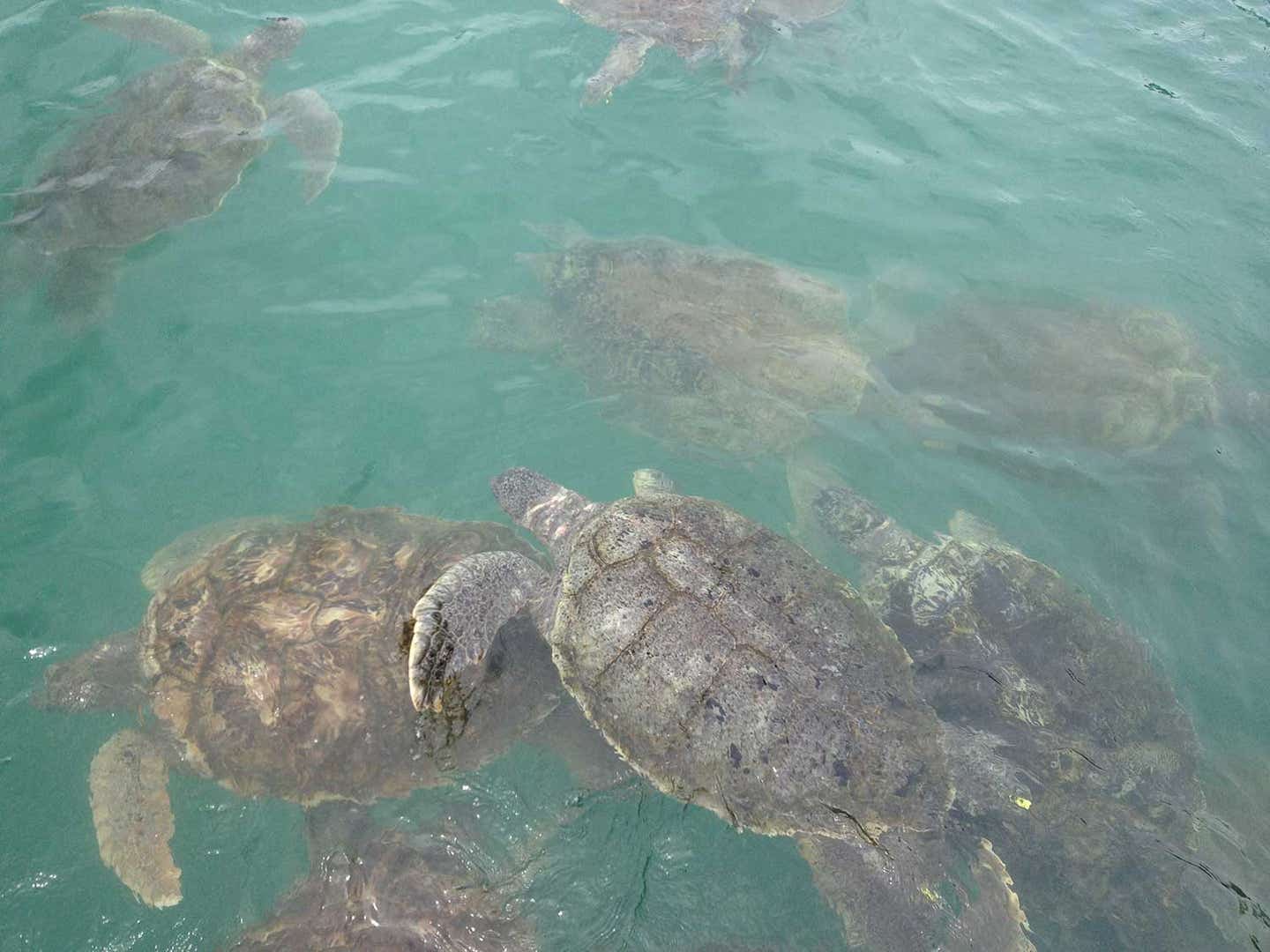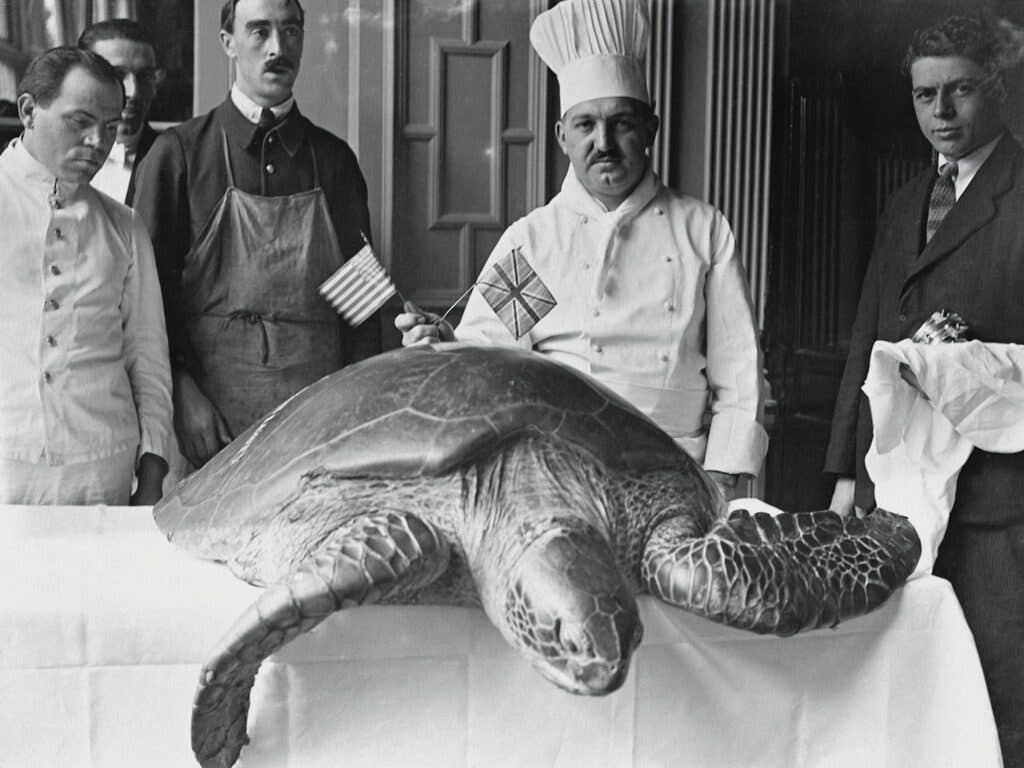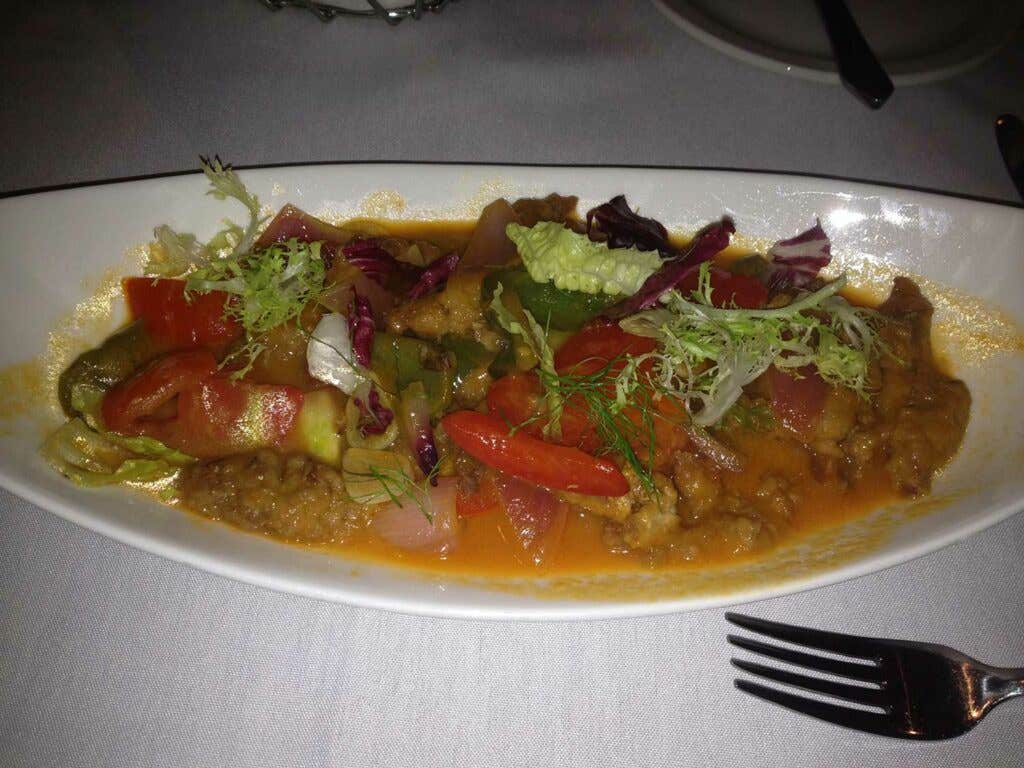
The Island Where Sea Turtles Are Still a Delicacy
What happens when a culinary tradition becomes endangered?
When I was eight, my family moved from Baltimore to Grand Cayman, the largest of the Cayman Islands. A few weeks after the move, my family was out for dinner at a local restaurant, where I noticed an item on the menu I’d never had and wanted to try: turtle stew. “A good choice, young lady,” our waitress said when I ordered. “The unofficial national dish of the Caymans.”
The dish consisted of stewed tomatoes, onions, peppers and turtle meat. I didn’t realize it then, but what I was eating was green sea turtle meat, which is silky and slightly chewy and tastes a bit like chicken or veal. It’s also an endangered species thanks to overhunting. I remember feeling proud of myself for trying something new, and actually enjoying it. I was still a kid, and had no idea how controversial an act of eating this was. Nor did I have any sense of the ethical dilemma I’d come to feel years later.
While there, I embraced the cuisine of my new home in the Caribbean, diving into plates of jerk chicken, conch fritters, and yes, turtle stew, without a second thought. I didn’t know that sea turtle meat was illegal to eat in most parts of the world, including in my home country. But in the Cayman Islands, it’s a considered a delicacy, and it still appears on menus and in kitchens today, though its consumption has sparked controversy and debate for decades.

The green sea turtle has been listed as an endangered species since 1978, but it has long been a trusted—and at one time, before packaged consumer goods and shipping containers, necessary —food source in the Cayman Islands, where fresh meat is hard to find. The country has a rich history of eating green sea turtle, and is one of the only places in the world where it’s still legal to do so. Long before the Cayman Islands was known for its tourism and banking industries, turtling fueled the economy. The islands used to have an abundance of green sea turtles in its waters, which were hunted for their meat, traded and sold.
By the 1950s, however, scientists were witnessing green sea turtle populations collapsing in places like Bermuda, Florida, and the Cayman Islands, caused by drastic overharvesting turtles.
“In order to recover sea turtles in the wild and get the animal off the endangered species list, we needed to get it off the menu,” said David Godfrey, executive director of the Sea Turtle Conservancy, committed to protecting and preserving sea turtles and their habitats.
And for the most part, they’ve succeeded. In 1973, the Endangered Species Act was passed, which made it illegal to harvest endangered animals like sea turtles in U.S. waters. In 1975, the Convention on International Trade in Endangered Species of Wild Fauna and Flora (CITES) agreement entered into force, which forbade the international trade of threatened and endangered animals in participating countries. As a result of these laws, green sea turtles are protected and the demand for sea turtle meat has declined, allowing the wild green turtle population to being to recover.
Related
These days, you don’t see turtle—especially green sea turtle—being eaten in many places. The culinary tradition still persists in the Cayman Islands, though it is largely being kept alive by the Cayman Turtle Centre (known as the Cayman Turtle Farm until 2016), operated by a government-owned company. The facility functions as a tourist attraction where visitors can hold, kiss, and pass around young sea turtles that are kept in shallow concrete tanks. It is also a turtle farm that breeds and raises green sea turtles for their meat, which according to the center’s 2016 annual report, is “sold strictly for consumption and use within the Cayman Islands.” The center sells the farmed meat to local restaurants, which then offer it to visitors. It is the only facility in the world raising sea turtles for consumption.

Since its inception in 1968, the Cayman Turtle Centre/Farm has ignited debate. Supporters believe the sale of sea turtle meat should continue in the Cayman Islands, and the turtle farm provides a way to do so without diminishing the wild population. Others, like the Sea Turtle Conservancy’s David Godfrey, believe the facility perpetuates the image of green sea turtle as meat by giving tourists from around the world the opportunity to eat the animal. “There’s a way to honor the Cayman Islands’ rich history and at the same time contribute to turtle conservation,” said Godfrey. “I don’t know exactly what that looks like, but it’s different than what it looks like now.”
It seems a number of Caymanians may agree. According to a 2015 report on consumer preferences for sea turtle in the Cayman Islands, only 30% of all residents had consumed turtle meat in the last year, with people aged 35 and younger the least likely to have eaten it. The study also found evidence that being an endangered species has played a role in deterring people’s consumption of the farmed sea turtles. “For Cayman residents that don’t eat sea turtle, ethical reasons, religion, animal welfare and being endangered species were the top reasons given,” said the study’s lead researcher, Dr. Ana Nuno of the University of Exeter in the U.K.
I contacted an old school friend of mine who is in her mid-twenties and whose family still lives on the island to ask who still eats the stew. She couldn’t think of anybody that is “a big turtle eater,” including herself. “The older Caymanians, maybe,” she told me. Even though it’s tradition, young Caymanians are opting not to eat sea turtle, and I wonder if all the trips to the turtle farm I took with my classmates helped shape our own ethical views.
Whatever the reasons, Caymanians are losing their taste for sea turtle. While wild green sea turtles populations are finally making a comeback, a new threat of extinction has presented itself. Except this time, it’s not an animal, but a culinary tradition that’s at risk.
Keep Reading
Continue to Next Story










